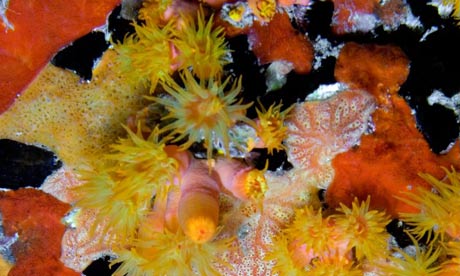I was rung up today by a journalist who wanted me to comment on whether sunscreens could cause coral bleaching. Her question was triggered by an article published this month in Environmental health Perspectives by Danovaro, R. et al. (doi:10.1289/ehp.10966.) which shows that very small amounts of sunscreen can cause corals to bleach. This is potentially interesting given the often close association of tourists and coral reefs.
Looking closely at the paper, however, I think there may be a few problems. Whereas the article talks about ‘bleaching’ (which involves the specific movement of symbiotic dinoflagellates out of the coral tissue, which remains behind), the photo that accompanies the article shows a white coral which looks as if it has lost all of its host tissue. That is, the coral looks dead in my opinion rather than bleached.
Danovaro et al. (2008) also discuss the mechanism behind the putative bleaching caused by the sun screens. The authors saw a proliferation of viral like particles or VLPs in their ‘bleached’ specimens and concluded that the VLPs were responsible. Why did Danovaro and his team conclude this? Well, there are earlier pieces of work out of Willy Wilson’s laboartory, supposedly showing that mass coral bleaching is triggered by latent VLPs are triggered by elevated water temperatures (Lohr et al. 2007). Willy is pretty straight up about it. “I’m pretty convinced that viruses are instrumental in the whole bleaching process,” says William Wilson from the Bigelow Laboratory for Ocean Sciences Sciences in Boothbay Harbor, Maine (Nature News). Continue reading









